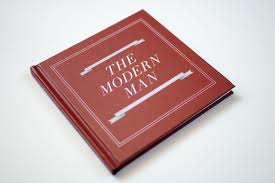Modern Man – Foreshadowing Modern Man
Some experts indeed would say, for instance, of the implements found in the late Pliocene deposits of East Anglia, that they are derived from an even greater antiquity than the deposits in which they are found, having been washed out of their original site by later floods. While these implements suggest the existence of man at a very early period and in the Tertiary Age, the violence of the convulsions of nature at this time affected geographical and climatic conditions to such an extent by the repeated rise and fall of the earth’s surface, which changed the relative distribution of land and water, that it is improbable that such fragile relics as the early man, however, a claim for Tertiary Age has been advanced. Some of the gravels among which the fragments of the skull of Piltdown man, Eoanthropus, were found in Sussex, as announced in the year of 1912 were of Pliocene Age. But these relics came to light after the gravels had been dug out and removed from their beds, so that it had become impossible to say with certainty what the original position of the skull had been. It could not, therefore, be dated without question, and is now generally considered to be of early Pleistocene Age. If this is correct, the Piltdown skull is approximately of the same antiquity as the two relics from the Far East already mentioned, Pleistocene at early Quaternary gravels of the Pleistocene at Trinil in Java, and Peking man, who was found in the cave of choukoutien, near Peking, in deposits in which it was associated with fossils pointing to an early Pleistocene dating. The remains of Pithecanthropus first found by Dr. E. Dubois consisted of a skull cap, thigh bone and tooth. Other bones were also discovered, but not described until many years later, while some details are still unpublished. The skull cap is of so primitive a form that doubts were long felt whether it were human at all. Dr.Dubois himself is still inclined to regard it as a gigantic gibbon, but it is now generally accepted as a very primitive human type, while the character of the thigh bone shows that this being walked upright, hence the addition of the word erectus in the full title. The human character of Pithecanthropus is now supported by its resemblances to the later discoveries of Piltdown man and Peking man, The first compete skull of the latter was found in 1929, the latest specimens are three skulls discovered in the same cave in 1936. It has been claimed that if skulls of early man found in Kenya, in East Africa, one may be approximately of the same age as Peking man and Pithecanthropus, but it is of a different type, a precursor of modern man. The claim to a high antiquity for man in this region, resting as it does on evidence which at present lacks corroboration, must be regarded as not proven. Hence it is quite unique to know about definite information’s about the early man and human character of Pithecanthropus.

